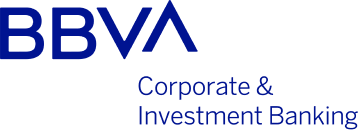
News | 12 April 2023
Current trends in sustainable syndicated loans
Jorge González Jacob, Global Head of Corporate Lending at BBVA CIB
Despite the less favourable context for financing conditions in the business environment in 2022 due to rate increases starting in September, the balance for syndicated loans was favorable, with 50,902 million euros of financing for companies, a 15% increase on the previous year, according to Refinitiv data. So we can say that this market is becoming more dynamic. These data show that sustainability is continuing to take center stage, with an increase in green financing operations in the short and medium term.
Against this backdrop, let's look at the main trends in sustainable syndicated loans:
1. Increased scrutiny by banks
Banks are increasingly requiring borrowers to follow science-based targets to fight greenwashing. In syndication, the questions related to sustainability raised by potential lenders have increased exponentially in number and are increasingly difficult to address.
Some banks have added an additional layer relating to sustainability to their approval process.
Sustainability-linked loans went from representing 20% of the total volume in 2017, to 83% in 2022.
2. Guidance on external reviews
In March 2022, the APLMA, MAL and LSTA published guidelines to promote best practices in external review processes. This was a further step toward development of a global framework of market rules and guidelines for good practices.
The guidelines provide: a list of possible external reviews; ethical and professional standards for external reviewers; an overview of the minimum information that each type of external review should contain; when the external review should be performed; and the recommended level of disclosure.
In February 2023, the LMA, LSTA and APLMA published an update of the Green Loan Principles, Social Loan Principles and Sustainability-Linked Loan Principles, providing new guidance and recommendations to encourage greater transparency for these products and establish terminology for verification.
3. Increasing importance of scope 3 emissions
Scope 3 emissions: CO2 emissions not produced directly by the company but generated in the upper and lower parts of its value chain (pressurized gas and oil, automotive and construction sectors).
The International Sustainability Standards Board recently decided to require companies to publish their scope 1, 2 and 3 emissions. One of the main challenges for companies is reducing their greenhouse gas emissions. The next challenge is to agree methods for collecting and disclosing information on scope 3 emissions consistently.
4. Sustainable finance framework
Some borrowers are using the existing Sustainable Bond Framework in their negotiations with banks to provide assurance that their key performance indicators and related targets are sufficiently important and ambitious. These frameworks, which can be used in the issuance of green, social and/or sustainability-related bonds, have been developed in accordance with ICMA's sustainable bond principles, which are, in many ways, similar to the sustainable lending principles published by loan market associations.
5. European taxonomy
The European taxonomy is a transparency tool that imposes disclosure obligations for some commitments in relation to aligned activities and establishes an understanding of green activities. The taxonomy is currently only applicable to domestic loans, which account for a relatively small share of the global market.
The taxonomy cannot be applied immediately to the general operations of companies, particularly sustainability-linked loans, which have increased considerably in the last five years, until figures for the companies are available (they will be mandatory from 2023).
6. New trend: donation mechanisms
In 2021, some Spanish borrowers included a donation clause linked to sustainability adjustments to margins.
The underlying idea is to donate any adjustments to the margins to a third party, so that the benefit of such adjustments is passed on by the party that receives it without duplicating the impact of the sustainability-linked financing.
This is an interesting development in sustainable finance, as it aligns the interests in the borrowers' profitability with sustainability objectives. This can help drive positive change in companies' environmental and social performance, by incentivizing borrowers to improve their sustainability performance.
How does it work?
Combining margin adjustments and donation commitments
- The borrower undertakes to donate the amount of the adjustments made under the mechanism to one or more sustainable projects annually:
- The maximum margin adjustment for amounts drawn;
- for undrawn amounts, the lender makes a contribution from adjustments to the commitment fee (i.e., 35% of the maximum margin adjustment).




